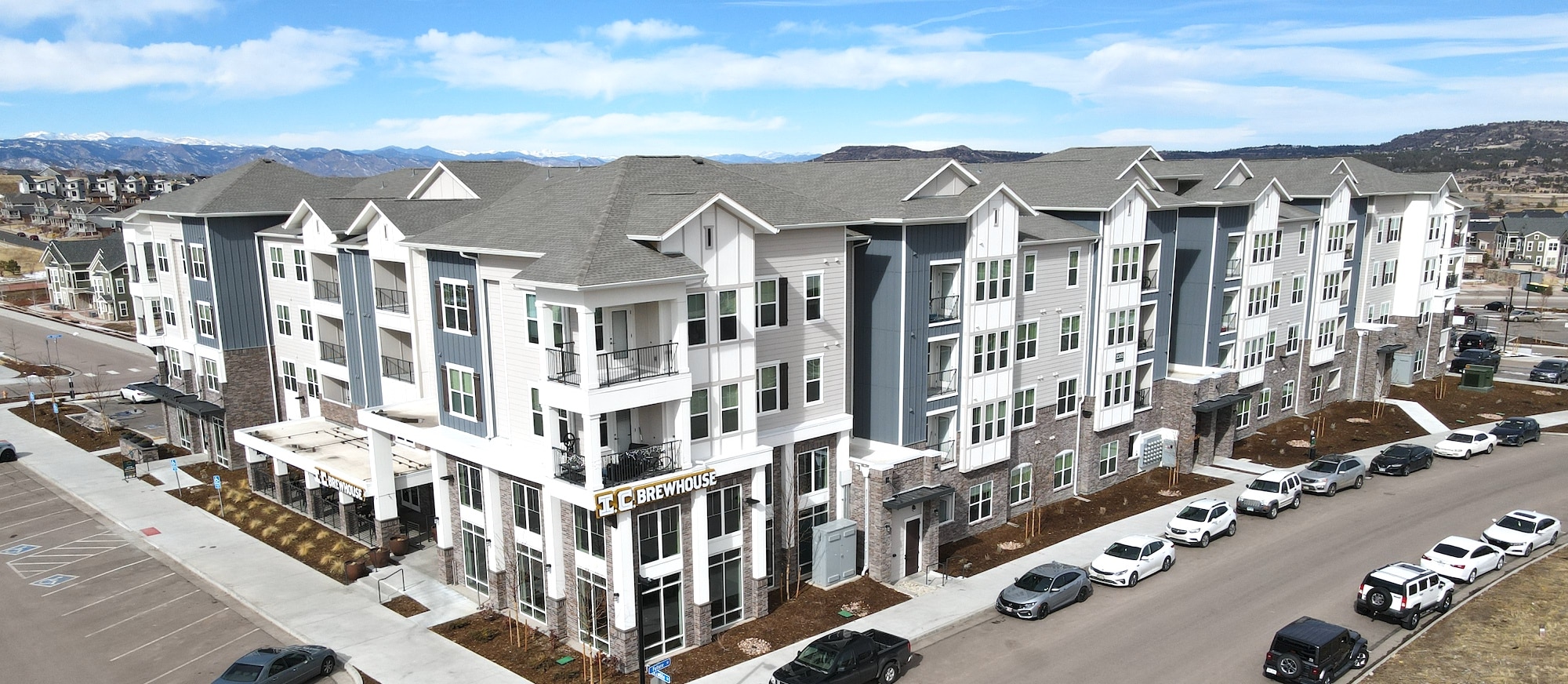Table of Contents
How Long Does A Roof Last On Average? #1 Best
While we all wish our roofs could last forever, that’s simply not the case. Eventually, every roof will need to be replaced no matter what durable material was used or how well it was installed. However, there are some things you can do to prolong the life of your roof, such as:
- Install high-quality materials
- Do regular inspections and maintenance
- Live in an area less prone to severe weather (easier said than done)
Because your roof is your home’s first line of defense against the elements, investing in a good material can be the difference between a long-lasting roof and having to make frequent repairs. How Long Does A Roof Last On Average? #1 Best
To get expert advice on how to make your roof last longer, visit https://executiveroofcoach.com/the-executive-roof-coach-page.
How Long Does a Roof Last (by Material)? ⌛
Did you know there are over a dozen different types of roofing materials, all lasting various lengths of time? While it’s unlikely you’ll install all of them on a standard residential home, understanding their durability can help you make informed decisions. How Long Does A Roof Last On Average? #1 Best For additional insights, check out https://executiveroofcoach.com/the-executive-roof-coach-page.
Asphalt Shingles: 15-30 Year
In the United States, asphalt shingles are the most popular roofing material. They endure for about 15-30 years, offering an affordable solution. How Long Does A Roof Last On Average? #1 Best For tips on choosing the best shingles, visit https://executiveroofcoach.com/the-executive-roof-coach-page.
Architectural Shingles: 30-50 Years
Architectural shingles are more durable and stylish than standard asphalt shingles.How Long Does A Roof Last On Average? #1 Best Learn more about the benefits of architectural shingles at https://executiveroofcoach.com/the-executive-roof-coach-page.
Metal Roofs: 40-70 Years
Metal roofs have grown in popularity due to their long lifespan and energy efficiency. For advice on installing or maintaining metal roofs, check out https://executiveroofcoach.com/the-executive-roof-coach-page.
Cedar Shakes: 30-35 Years
Cedar shingles or shakes offer a rustic and natural aesthetic. For maintenance tips, head to https://executiveroofcoach.com/the-executive-roof-coach-page.
Clay Tile: 50-100 Years
Clay tiles are incredibly durable and popular in dry climates. Learn more about their benefits at https://executiveroofcoach.com/the-executive-roof-coach-page.
Concrete Tile: 50-60 Year
Concrete tiles mimic clay tiles while offering enhanced features. How Long Does A Roof Last On Average? #1 Best For guidance on concrete tile roofing, visit https://executiveroofcoach.com/the-executive-roof-coach-page.
Slate Tile: 100+ Years
Often called “The Forever Roof,” slate tiles are among the longest-lasting materials. To learn more about slate tile options, check https://executiveroofcoach.com/the-executive-roof-coach-page.
Factors That Lessen Your Roof’s Lifespan 👎
Your roof’s lifespan can vary due to factors like poor installation, severe weather, or lack of maintenance. For expert guidance on extending your roof’s life, explore https://executiveroofcoach.com/the-executive-roof-coach-page. How Long Does A Roof Last On Average? #1 Best
Things You Can Do to Prolong Your Roof’s Lifespan 👍
To maximize your roof’s lifespan:
- Conduct regular inspections every year.
- Clean out your gutters and downspouts every spring.
- Replace damaged shingles ASAP.
For a detailed maintenance plan, visit https://executiveroofcoach.com/the-executive-roof-coach-page.
Ensure a Long Lasting Roof With Proper Installation
At Tectum Roofing, we prioritize longevity and durability for every roof we install. Learn how we can help you maintain your roof by visiting https://executiveroofcoach.com/the-executive-roof-coach-page.and other important factors. We’ll also discuss some hands-on tips for prolonging the life of your roof. How Long Does A Roof Last On Average? #1 Best
![How Long (On Average) Does A Roof Last? [Timeline] how long does a roof last metal](http://weroof.com/wp-content/uploads/2022/07/metal-roofing-tectum.jpeg)
How Long Does a Roof Last (by Material)? ⌛
Did you know there are over a dozen different types of roofing materials? All lasting various lengths of time? How Long Does A Roof Last On Average? #1 Best Well, it’s likely you won’t install all of them on a standard residential home— so we’ll cover the 7 most common types of roofing materials:
- Asphalt shingles
- Architectural shingles
- Metal roofing
- Cedar shakes
- Slate
- Clay tiles
- Concrete tiles
Each has unique features, durability, and lifespan, so knowing the facts can help you make a well-informed decision as you make one of the biggest investments in your home.
Asphalt Shingles: 15-30 Years
In the United States, asphalt shingles are the most popular roofing material. This is most likely due to their low cost and not because of their longevity. How Long Does A Roof Last On Average? #1 Best While they only endure for about 15-30 years, they are quite inexpensive to replace if you aren’t too concerned about long-term investments or a quick remedy. The benefits of asphalt shingles include:
- It’s highly affordable
- Easy to install and maintain
- You can easily replace just one shingle
Architectural Shingles: 30-50 Years
Architectural shingles are a more expensive and durable form of basic asphalt shingles. How Long Does A Roof Last On Average? #1 Best They’re sturdier and come in additional sizes and color options, which is useful for people wishing to improve their standard roof to one that is a little longer-lasting and has better style. Benefits include:
- Withstanding winds up to 120mph
- Very cost-effective
- Look more high-end than standard asphalt shingles
Metal Roofs: 40-70 Years
Metal roofs are available in many shapes, sizes, and forms. Panels, shingles, and sheets are some common varieties, with metal shingles growing in popularity in recent years. How Long Does A Roof Last On Average? #1 Best Metal roofs have a longer lifespan than other types of roofs, making them a great investment for only a marginal increase in price. Plus, the following benefits:
- Completely fire-resistant
- Environmentally friendly (recyclable materials)
- Boosts energy-efficiency
- Big ROI compared to other materials
- Stunning design and color options
![How Long (On Average) Does A Roof Last? [Timeline] how long does a roof last cedar shake](http://weroof.com/wp-content/uploads/2022/08/how-long-does-a-roof-last-cedar-shake.jpeg)
Cedar Shakes: 30-35 Years
Cedar shingles or shakes are a form of natural roofing made out of cedar wood. They have a rustic appearance and age beautifully throughout their lifespan. How Long Does A Roof Last On Average? #1 Best Cedar shake roofs provide several advantages:
- Resistant to fire and fungus
- Naturally insulating material
- A unique, aesthetically pleasing appeal
- Can be re-treated and stained to prolong their life
Clay Tile: 50-100 Years
Clay tile is not as common in northern states but is quite popular in dry desert climates. This is due to its high heat resistance, which keeps homes much cooler in the hot months. These states also experience much fewer storms or rain than northern states, thus can maintain a clay tile roof much better. How Long Does A Roof Last On Average? #1 Best. It’s also a beautiful material that can really enhance the curb appeal of your home while providing these benefits:
- Highly durable
- Fire-resistant
- Long-lasting
Concrete Tile: 50-60 Years
Concrete tile, like clay tile, is a fantastic roofing material in hot and dry environments. When it comes to concrete and clay tile roofs, many people mistake them for one another; as concrete may be utilized to make a copy of clay tile with the same appearance but enhanced features, such as:
- Being very low maintenance
- Highly energy-efficient
- Frequently covered by 50+ year warranties
Slate Tile: 100+ Years
Often called “The Forever Roof,” slate tiles are the longest-lasting roofing material around and have been used for well over a hundred years. How Long Does A Roof Last On Average? #1 Best. If you ever visit Europe, it’s likely you’ll see many a slate tile roof standing just as strong as it did the day it was installed.
This is because slate is a natural material in nature that can withstand just about any type of extreme weather. Residential homes today might choose a synthetic slate over natural just based on price, lifespan, and the aesthetics of the material.
- Lasts virtually forever with little to no maintenance
- Synthetic options are ideal for residential homes
- Won’t end up in a landfill
- Fire, water, insect, and wind-resistant
Factors That Lessen Your Roof’s Lifespan 👎
Your roof’s lifespan is estimated based on data and research showing how long they last in general, but many factors can cause that estimate to be longer or shorter. Some of the biggest culprits of lessening your roof’s life include poor installation, maintenance, and repairs. How Long Does A Roof Last On Average? #1 Best
Failed DIY Repairs ⚒️
We love independent homeowners who take matters into their own hands! However, when it comes to roof repairs, it’s always recommended you work with a professional. Failed repairs can not only make matters worse but can void warranties and insurance claims. How Long Does A Roof Last On Average? #1 Best
Hail and Wind Storms ⛈️
Even the most durable roofing materials can face damage when a strong wind or hail storm comes through. From cracked shingles to loss of granules, this severe weather can wreak havoc on your roof and, if left untouched, can cause greater damage like water leaks or poor ventilation down the road.
![How Long (On Average) Does A Roof Last? [Timeline] how long does a roof last natural disaster](http://weroof.com/wp-content/uploads/2022/08/how-long-does-a-roof-last-natural-disaster.jpeg)
Natural Disasters 🌪️
From hurricanes and tornadoes to earthquakes, if your home is in an area prone to natural disasters, this will also take a big toll on your roof. These events can cause severe structural damage that cannot be repaired and will require you to replace your roof entirely.
Poor Installation and Maintenance 🏚️
This is likely the most common reason a roof’s lifespan is shortened. If your roof wasn’t installed correctly or you haven’t been keeping up with regular maintenance, it will show over time. These include things like clearing your gutters and downspouts, cleaning your vents, removing any debris, and checking for loose shingles.
Things You Can Do to Prolong Your Roof’s Lifespan 👍
The expected life of your roof doesn’t have to be the end-all-be-all. As a homeowner, it’s up to you to maintain your property to keep it looking nice and lasting long— that includes your roof. So here are some helpful maintenance tips to ensure your roof lasts for as long as it can.
- Conduct regular inspections every year.
- Clean out your gutters and downspouts every spring.
- Ensure your attic is properly ventilated and insulated.
- Don’t put off repairs! Replace any damaged shingles ASAP.
- Know the signs of a roof leak like wet attic floor, spots on the ceiling, and discoloration on the shingles.
- Keep overhanging trees or branches trimmed back so they don’t fall on your roof.
- Unless you know what you’re doing, don’t attempt to DIY roof repairs.
- Utilize roof maintenance plans if offered to you by your contractor.
If you follow these helpful tips, you can extend the lifespan of your roof and avoid any costly repairs or replacements down the road. And if you’re ever unsure about something, always reach out to a professional for help.
Ensure a Long Lasting Roof With Proper Installation 💯
At Tectum Roofing, we care very much that your roof lasts for as long as you own your home (or longer). From our industry-leading warranties to insurance claims assistance and our roof asset management program— we offer all of the tools and resources to ensure your investment lasts.
If you are curious to know just how old your roof is and how long it has left, reach out to us for a roofing inspection and estimate! We’ll help you maintain what’s most important to you.
![How Long (On Average) Does A Roof Last? [Timeline] how long does a roof last roof](https://weroof.com/wp-content/uploads/2022/07/how-long-does-it-take-to-replace-a-roof-large-project.jpeg)


